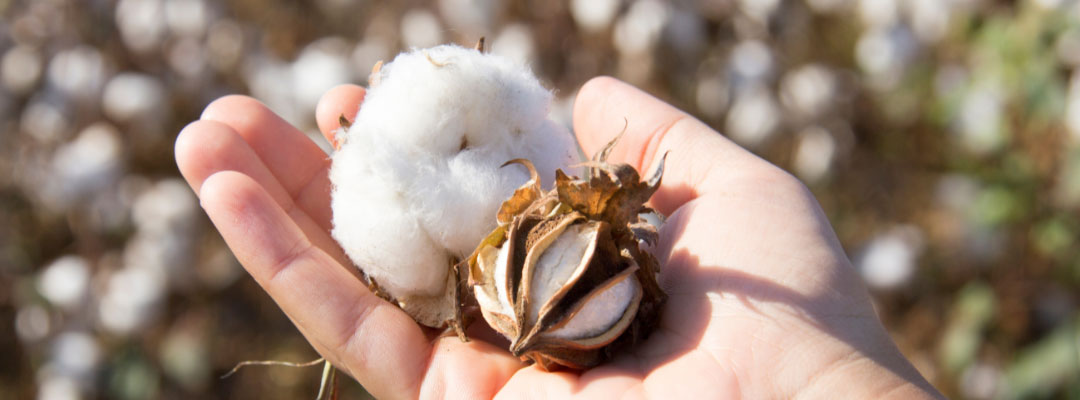The United States has led world cotton exports since the 1980s. After the 1990s, the U.S. shipped most of its cotton production to foreign markets. As domestic processing capacity shrank, U.S. cotton farmers became more dependent on international markets. Brazil expanded cotton production and exports in this context, challenging the U.S. leadership in cotton. We briefly contrast the U.S. and Brazilian cotton markets in two parts: the first highlights trade and the second production.
The importance of international markets for U.S. cotton farmers has grown in recent decades. In 1995, the World Trade Organization (WTO) implemented the Agreement on Textiles and Clothing (ATC). The ATC gradually phased out quotas on textile imports over ten years. Since the ATC’s implementation, U.S. exports jumped from 37% to 72% of total supply in 2023, underscoring the U.S.’s competitiveness overseas. Brazil exhibited a similar trajectory, reaching 66% of its total supply exported in 2023. Total supply includes beginning stocks, production, and imports. Figure 1 illustrates the upward trend of export relevance to cotton farmers.
Figure 1 – Cotton Exports as a Percentage of Total Supply.

Source: FAS/USDA/PSD.
Brazil surpassed U.S. cotton exports in 2023. The U.S. exported 11.75 M bales in the 2023 crop season, and Brazil shipped 12.1 M bales, leading cotton exports for the first time (USDA, 2024). Figure 2 shows the growth of Brazilian exports while U.S. exports stagnated. Factors such as Asian demand, favorable exchange rates, government support, and competitive prices fueled Brazilian exports. The U.S.-China trade war (2018-19) further shifted trade dynamics.
Figure 2 – U.S. and Brazil Cotton Exports.

Source: FAS/USDA/PSD.
Before the U.S.-China trade war, China ranked third among the largest importers; today, it tops the list. China now serves as the primary destination for U.S. and Brazilian cotton. According to U.N. Comtrade (2024), Brazil’s share of the Chinese market surged from 9% in 2014 to 37% in 2023, matching the U.S.[1] From 2022 to 2023, Brazilian cotton shipped to China jumped 49%, while U.S. exports dropped 33%. However, in the first half of 2024, the U.S. increased its exports to the Asian country by 79% compared to the same period last year.
The continued growth of Brazil’s cotton exports will likely challenge U.S. dominance further. Understanding the surge in Brazilian supply is particularly relevant for Southern growers, which are facing prices below $0.70 per pound, less than half of the May 2022 peak. Also, modest economic growth and high interest rates have constrained consumer spending worldwide, depressing the global demand for cotton. In part 2, we will review yield and production trends and how they may shape the export outlook.
References.
FAS/USDA/PSD. PSD Data Sets. Retrieved from: https://apps.fas.usda.gov/psdonline/app/index.html#/app/home[Accessed August 22, 2024].
U.N. Comtrade. Trade Data. Retrieved from: https://comtradeplus.un.org/ [Accessed August 29, 2024].
[1]. Market share is calculated from cotton quantity. The analysis with the U.S. Comtrade Database used HS 5201 cotton (not carded or combed).
Cali, Yuri, and Rachel Judd. “Shifting Winds: The Changing Landscape of Cotton Production and Exports in the U.S. and Brazil (Part 1).” Southern Ag Today 4(36.4). September 5, 2024. Permalink


